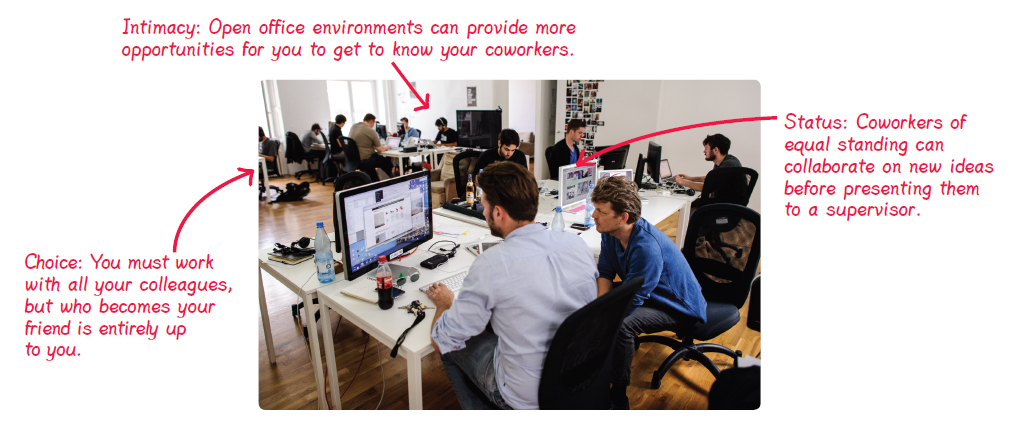Workplace Relationships
Affiliations you have with professional peers, supervisors, subordinates, or mentors are workplace relationships. These involvements vary along three dimensions: status, intimacy, and choice (Sias & Perry, 2004). First, most workplaces are structured hierarchically in terms of status, with some people ranked higher or lower than others in organizational position and power. Thus, a defining feature of workplace relationships is the equality or inequality of relationship partners. For example, you may work side by side every day with your coworker Katelyn, doing food prep, inventory, and cleanup in a restaurant. But if Katelyn is also your supervisor—she decides whether you keep your job and whether you get promotions and raises—she has power over you. That affects how you and she communicate. If Katelyn asks you to stay late or do additional work, it isn’t simply a request: it’s a professional demand. However, you can’t make similar demands of her because you don’t have the same level of authority.
Workplace relationships also vary in intimacy. Some remain strictly professional, with interpersonal communication restricted to work-related concerns. Others become deeply intimate. If you spend three nights a week sharing the same shift with Erin and Dante, you’ll likely get to know them both. But if you only share the same tastes, attitudes, beliefs, and values with Dante—not Erin—you may end up forming a deeper bond with Dante than with Erin.
Finally, workplace relationships are defined by varying degrees of choice—the degree to which participants willingly engage in them. As noted earlier, you don’t get to pick your coworkers. This can be especially challenging when you’re expected to work closely and productively with people you don’t like or don’t get along with. On the other hand, you do get to choose which coworkers become your friends—and sometimes, even which become romantic partners.
WORKPLACE RELATIONSHIPS
